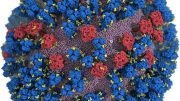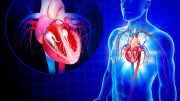
A study from the Harvard T.H. Chan School of Public Health found that older adults exposed to PM2.5 and NO2 air pollutants over a decade face increased risks of colorectal and prostate cancers. Even at low pollution levels, there’s an elevated risk for breast, endometrial, and the aforementioned cancers. Analyzing data from Medicare beneficiaries, researchers also found varying cancer risks across different communities and demographics. The study underscores the urgency to revisit and strengthen U.S. air pollution standards.
Prolonged exposure to fine airborne particles (PM2.5) and nitrogen dioxide (NO2) might heighten the risk of non-lung cancers in the elderly, according to recent research led by the Harvard T.H. Chan School of Public Health. In a study encompassing millions of Medicare recipients, researchers found that exposures to PM2.5 and NO2 over a 10-year period increased the risk of developing colorectal and prostate cancers. The findings also indicated that even minimal air pollution exposure could predispose individuals to develop breast and endometrial cancers.
“Our findings uncover the biological plausibility of air pollution as a crucial risk factor in the development of specific cancers, bringing us one step closer to understanding the impact of air pollution on human health,” said Yaguang Wei, research fellow in the Department of Environmental Health. “To ensure equitable access to clean air for all populations, we must fully define the effects of air pollution and then work towards reducing it.”
The study was recently published in the journal Environmental Epidemiology.
Expanding the Scope of Air Pollution Research
While air pollution has been established as a risk factor for lung cancer, and a link to breast cancer risk has been emerging, few studies have looked at its effects on prostate, colorectal, and endometrial cancer risk.
Researchers analyzed data from national Medicare beneficiaries aged 65 or older, collected from 2000 to 2016. All subjects were cancer-free for at least the initial 10 years of the study period. The researchers created separate cohorts for each type of cancer—breast, colorectal, endometrial, and prostate—with between 2.2 million and 6.5 million subjects in each cohort. Separate analyses looked at cancer risk under the impacts of air pollutants for various subgroups by factors including age, sex (for colorectal cancer only), race/ethnicity, average BMI, and socioeconomic status.
Analyzing the Data: Findings and Implications
Drawing from a variety of air pollution data sources, the researchers developed a predictive map of PM2.5 and NO2 concentrations across the contiguous U.S. This was then linked to beneficiaries’ residential ZIP codes to enable the researchers to estimate individual exposures over a 10-year period.
Findings from the nationwide analysis showed that chronic PM2.5 and NO2 exposures increased the risk of developing colorectal and prostate cancers but were not associated with endometrial cancer risk. For breast cancer, NO2 exposure was associated with a decreased risk, while the association for PM2.5 was inconclusive. The researchers suggested that the mixed associations may be due to variations in the chemical composition of PM2.5, which is a complex mixture of solid and liquid particles.
When the analysis was restricted to regions where air pollution levels were significantly below national standards and the composition of PM2.5 remained fairly stable, their effect on breast cancer risk was more pronounced. Stronger associations between exposures to both pollutants and endometrial cancer risk were also found at lower pollution levels.
In their analysis of risk by subgroups, the researchers found evidence suggesting that communities with higher average BMI may face disproportionately higher risk of all four cancers from NO2 exposure, and that Black Americans and those enrolled in Medicaid may be more susceptible to cancer risks (prostate and breast, respectively) from PM2.5 exposure.
The researchers noted that even communities with seemingly clean air were not immune to cancer risk. They found substantial associations between exposure to the two pollutants and the risks of all four cancers even at pollution levels below newly updated World Health Organization guidelines (which are lower than current U.S. standards).
“The key message here is that U.S. air pollution standards are inadequate in protecting public health,” said senior author Joel Schwartz, professor of environmental epidemiology. “The Environmental Protection Agency recently proposed stricter standards for PM2.5, but their proposal doesn’t go far enough in regulating this pollutant. Current NO2 standards are also woefully inadequate. Unless all of these standards become much, much stricter, air pollution will continue to result in thousands of unnecessary cases of multiple cancers each year.”
Reference: “Additive effects of 10-year exposures to PM2.5 and NO2 and primary cancer incidence in American older adults” by Yaguanga Wei, Mahdieh Danesh Yazdi, Tszshan Ma, Edgar Castro, Cristina Su Liu, Xinye Qiu, James Healy, Bryan N. Vu, Cuicui Wang, Liuhua Shi and Joel Schwartz, 1 August 2023, Environmental Epidemiology.
DOI: 10.1097/EE9.0000000000000265
Other Harvard Chan School authors include Edgar Castro, Cristina Su Liu, Xinye Qiu, James Healy, and Bryan Vu.
Funding for the study came from the National Institutes of Health grants R01ES032418 and P30ES000002.









Be the first to comment on "Harvard Scientists Expose Alarming Cancer Threat From “Safe” Levels of Air Pollution"